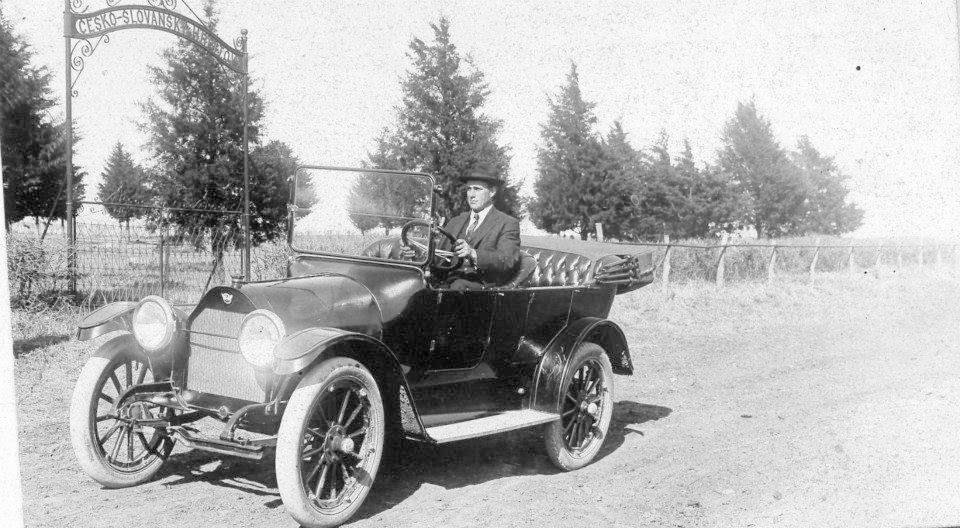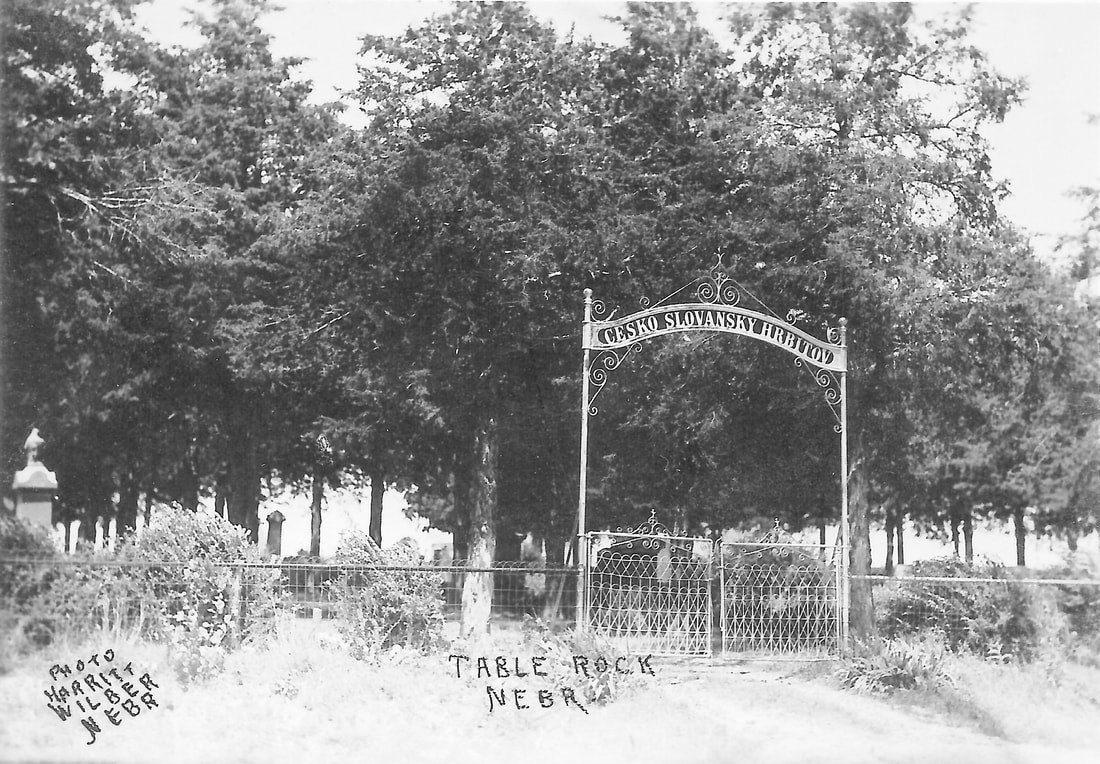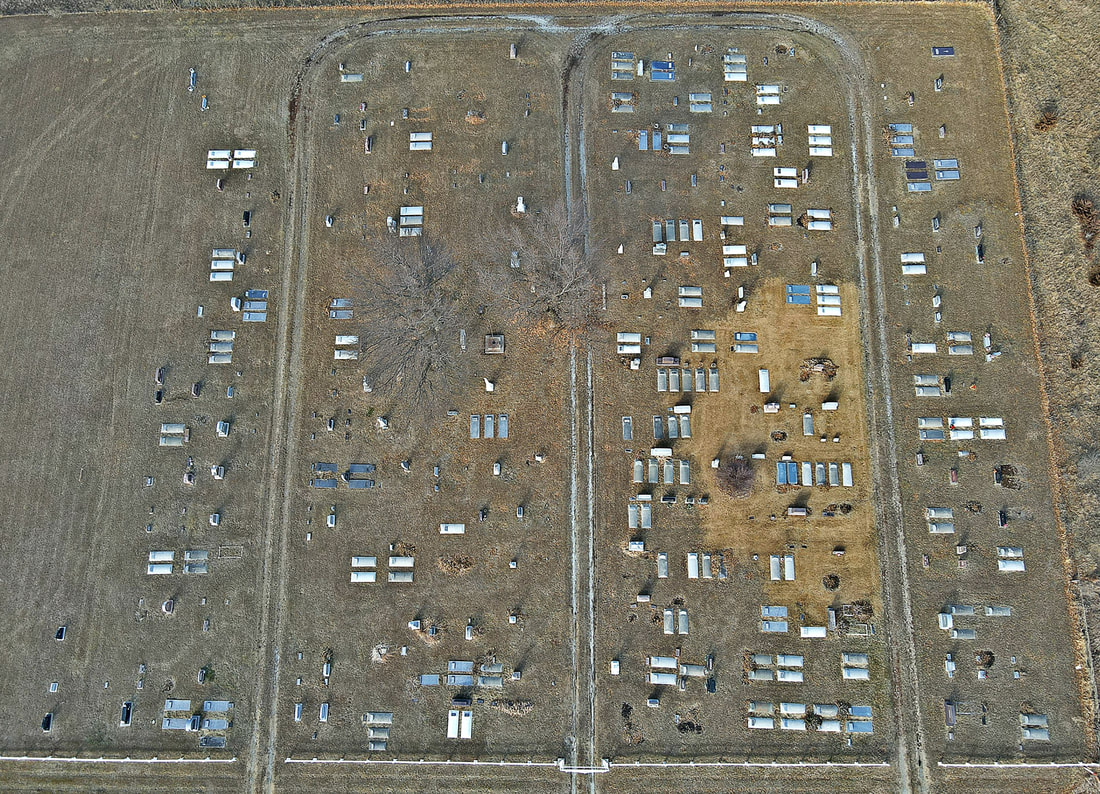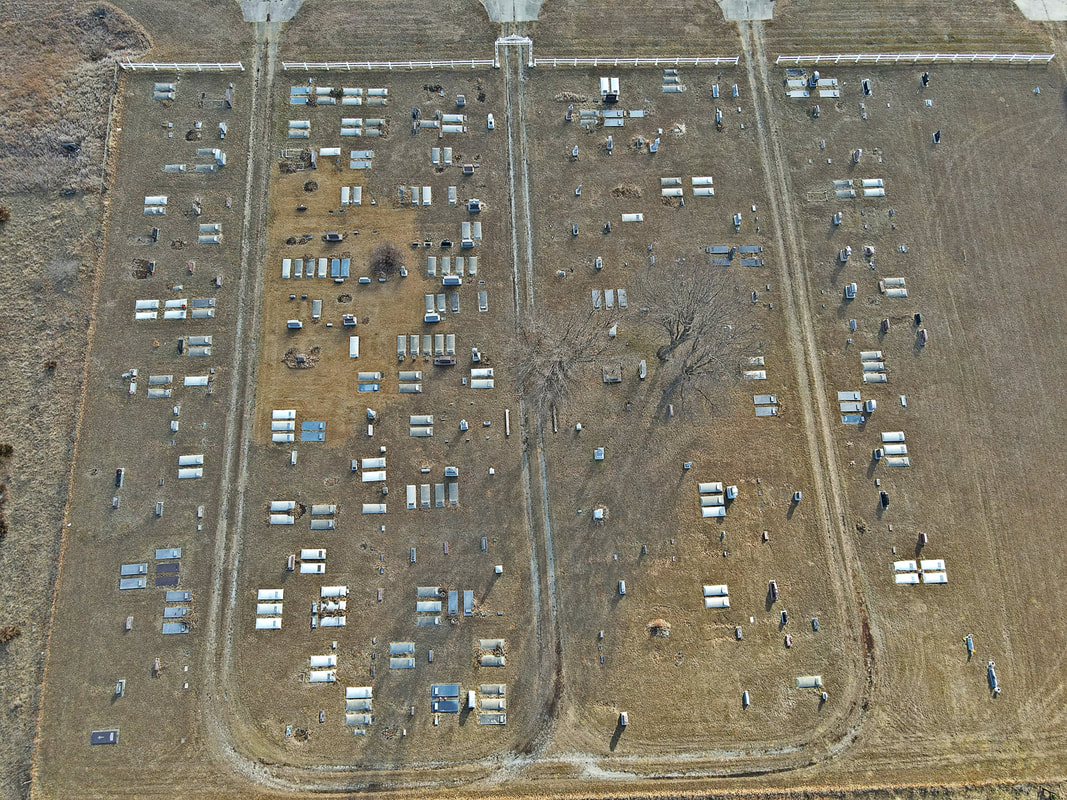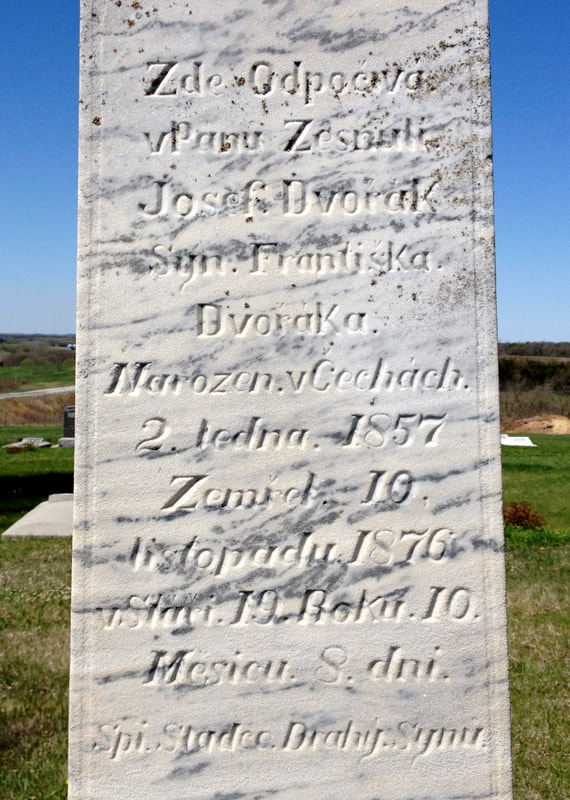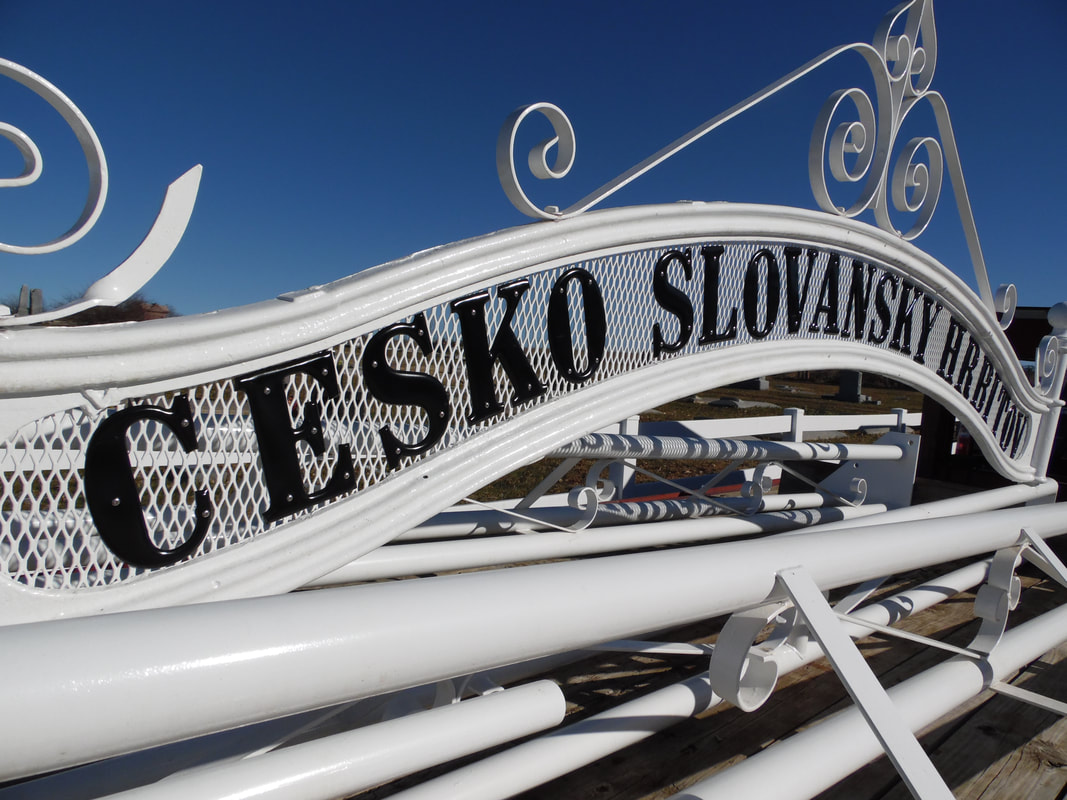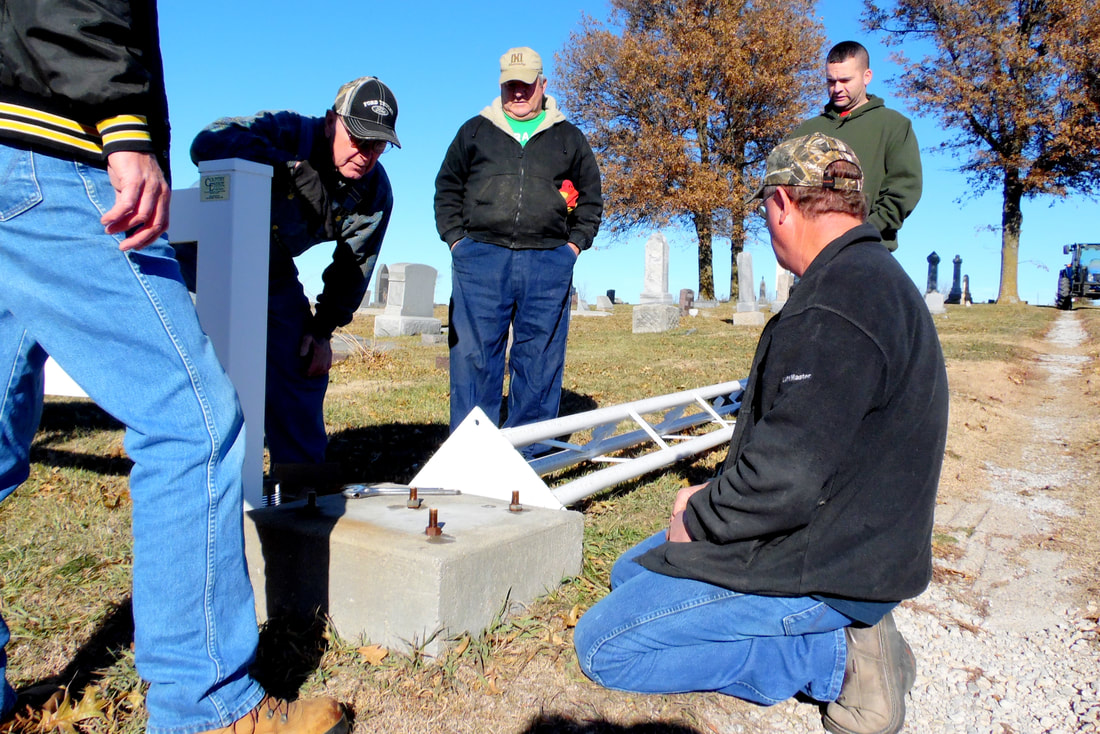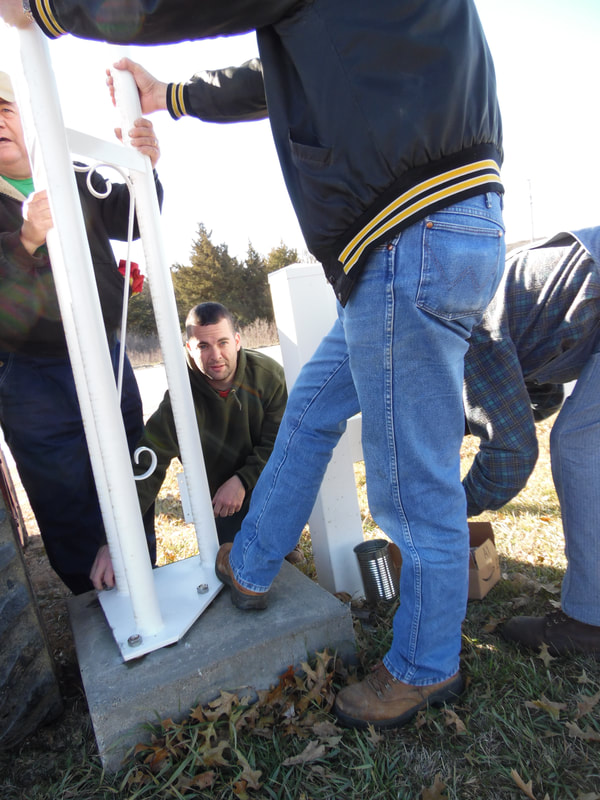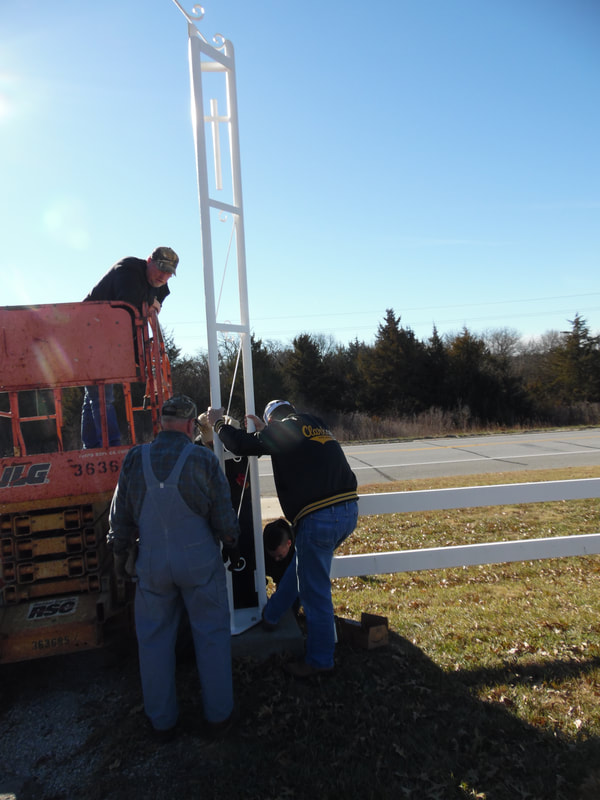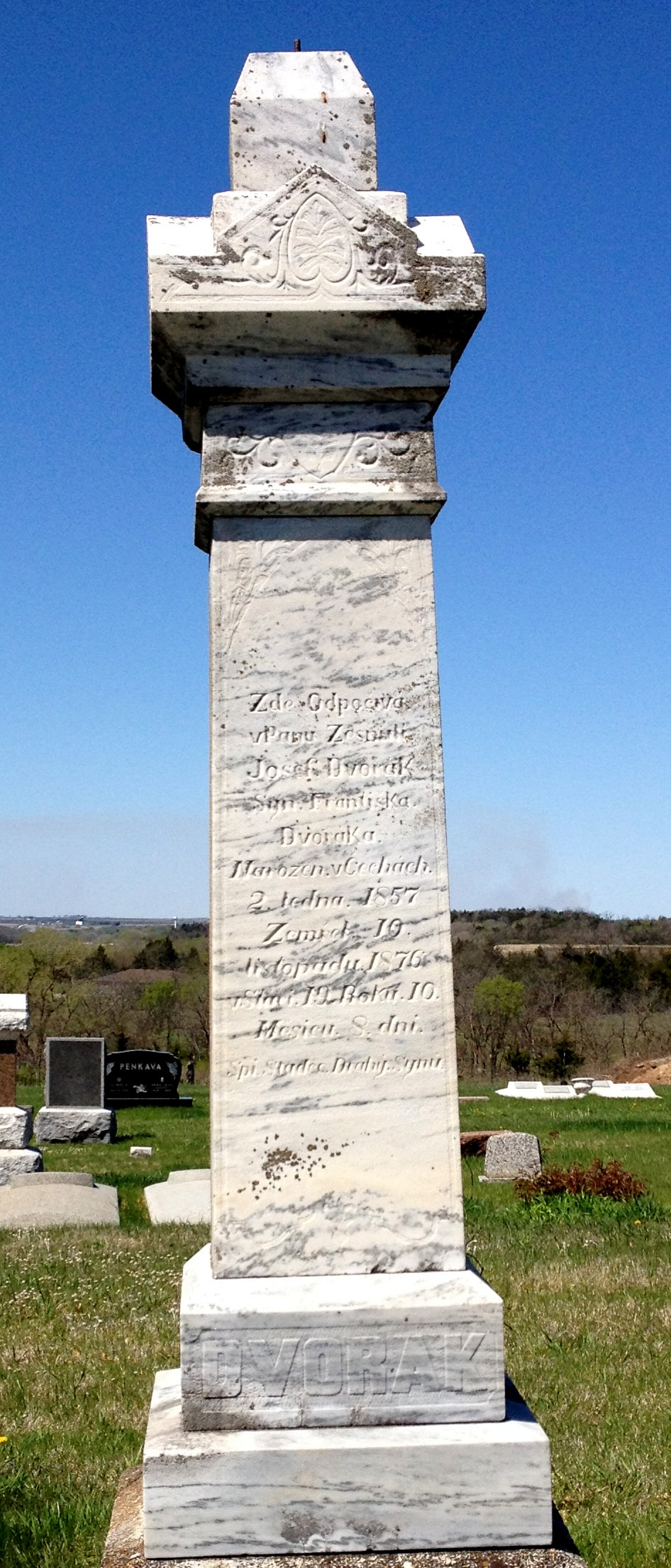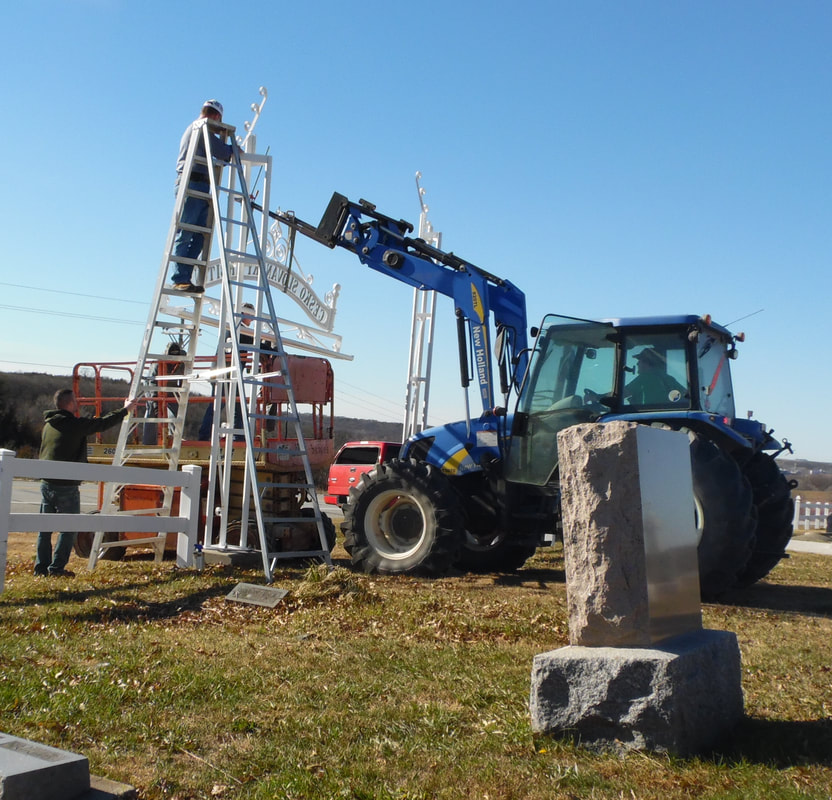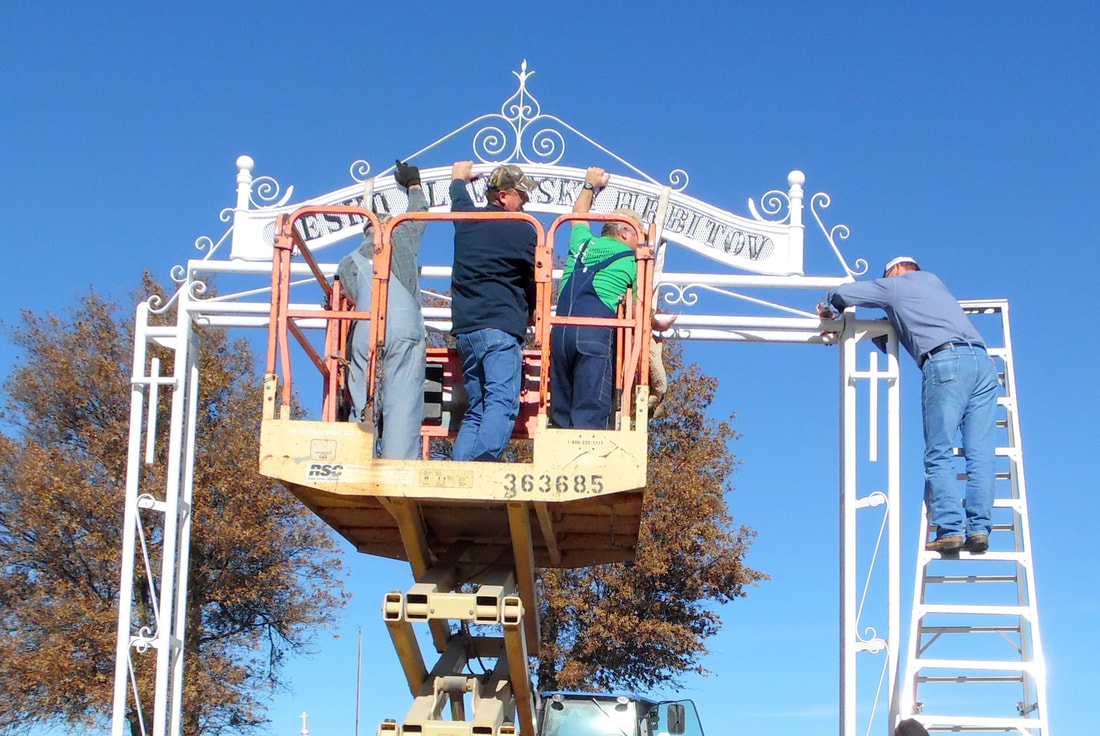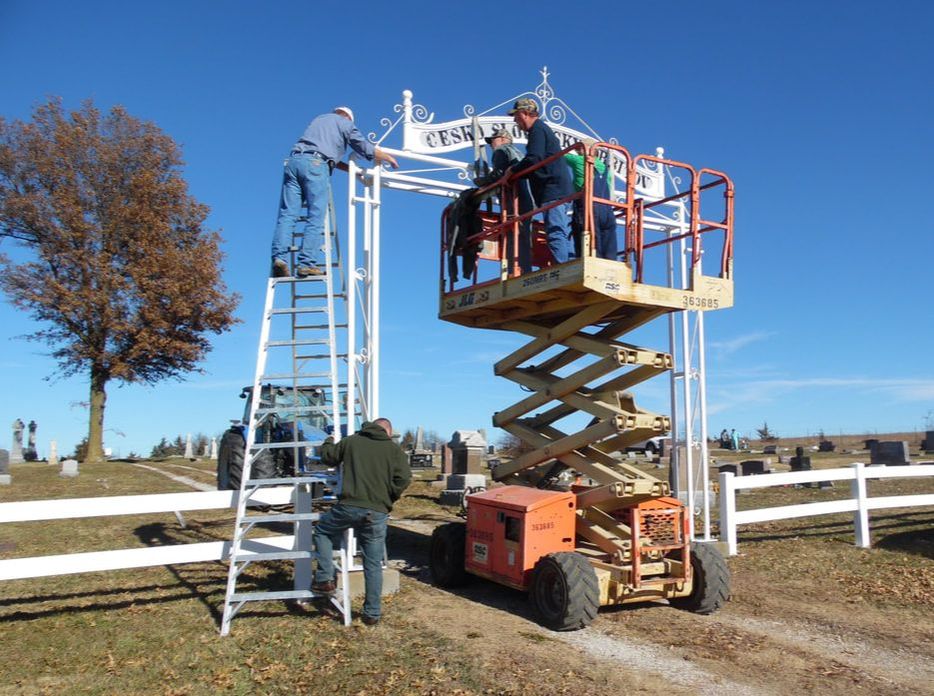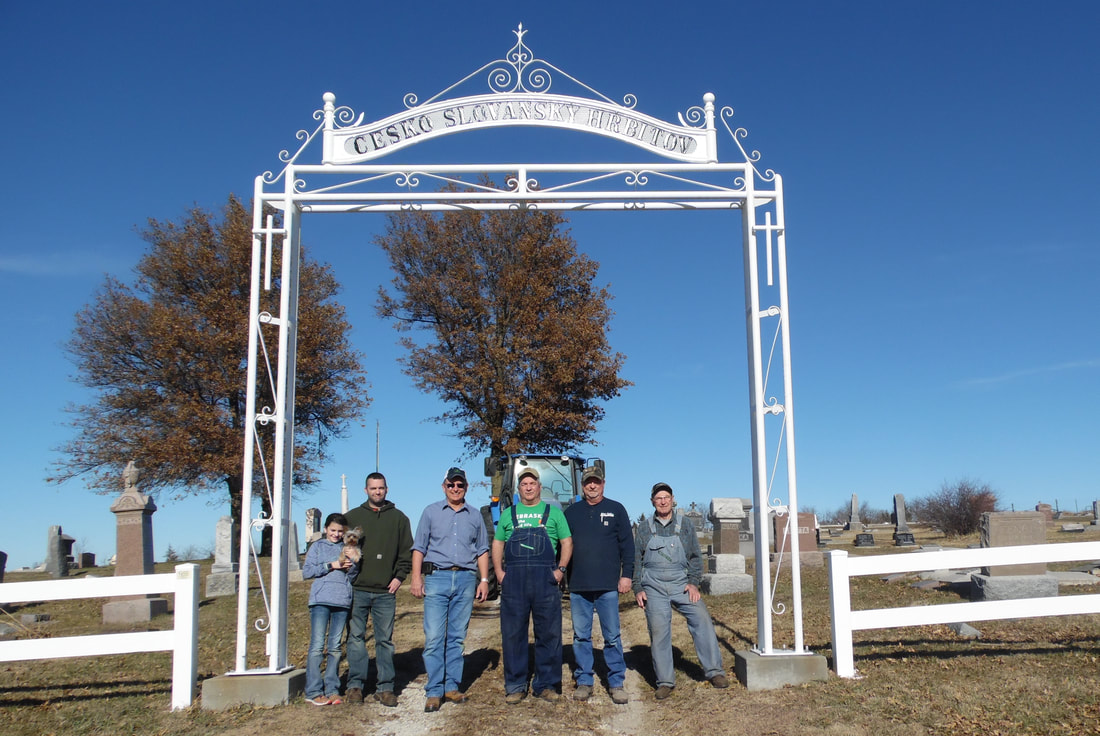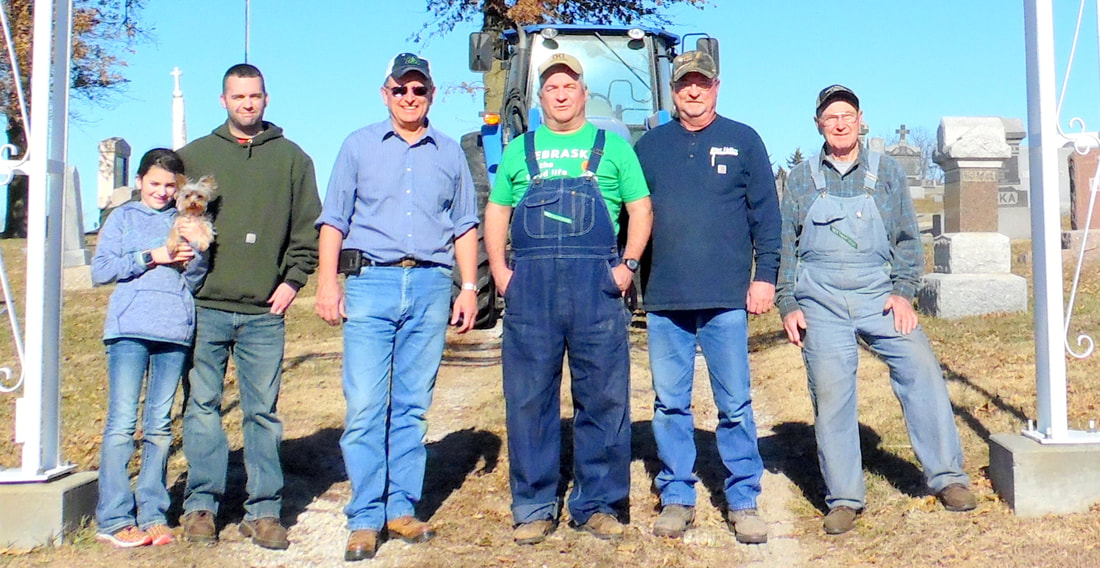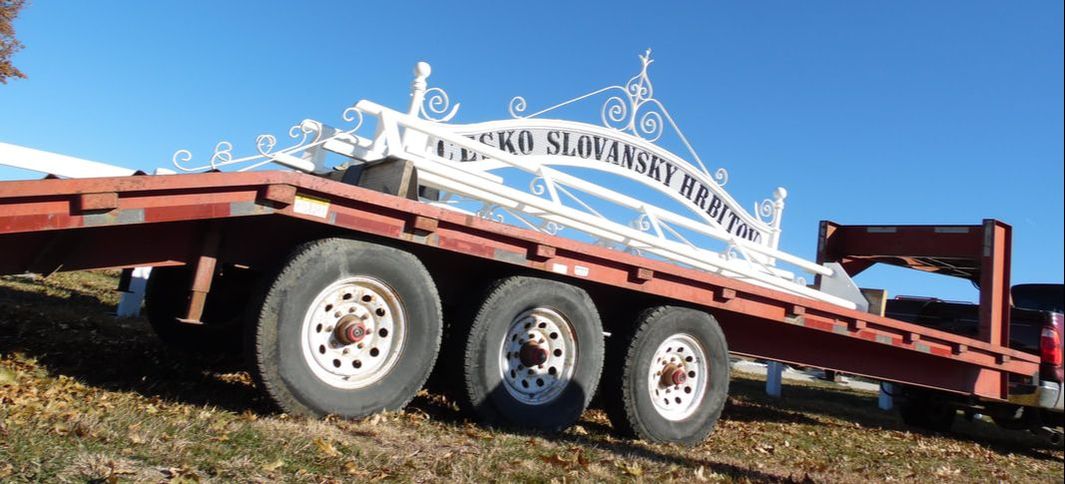table rock's bohemian cemetery
cesko slovansky hrbitov
within a few miles of each other, OUR two bohemian cemeteries HAVE THE 4TH HIGHEST NUMBER OF BOHEMIANS AT REST IN NEBRASKA
There are 21 Bohemian cemeteries in Nebraska identified in the cemetery database at FindaGrave.com.
The smallest is in Hayes Center, where there are 19 Bohemians buried.
At the Table Rock Bohemian Cemetery, 518 are buried, making Table Rock the seventh largest Bohemian cemetery in the state. Those buried there in the early days were from the "Czech Lands," which included Bohemia and Moravia, but when Czechoslovakia was created after World War I, the cultural identity of the cemetery was tweaked.
However, 422 are buried at the Bohemian Cemetery south of Humboldt which is only a few miles away from Table Rock's. It is often referred to as the Czech "National" Cemetery, which is thought to be a misinterpretation of the Czech name. Further details or clues would be welcome, let us know at [email protected].
Together, almost 1,000 Bohemians are buried in the two Bohemian cemeteries. Only the Omaha, Milligan (also in two cemeteries), and Clarkson Bohemian cemeteries have more Nebraska burials. Omaha has over 7,000, Milligan almost 3,000, and Clarkson almost 2,000. Wilbur has 532.
And, if you are looking at Bohemians in general, many more are buried in the other cemeteries around in Table Rock, Humboldt, and at St. Anthony's Cemetery outside of Steinauer.
The smallest is in Hayes Center, where there are 19 Bohemians buried.
At the Table Rock Bohemian Cemetery, 518 are buried, making Table Rock the seventh largest Bohemian cemetery in the state. Those buried there in the early days were from the "Czech Lands," which included Bohemia and Moravia, but when Czechoslovakia was created after World War I, the cultural identity of the cemetery was tweaked.
However, 422 are buried at the Bohemian Cemetery south of Humboldt which is only a few miles away from Table Rock's. It is often referred to as the Czech "National" Cemetery, which is thought to be a misinterpretation of the Czech name. Further details or clues would be welcome, let us know at [email protected].
Together, almost 1,000 Bohemians are buried in the two Bohemian cemeteries. Only the Omaha, Milligan (also in two cemeteries), and Clarkson Bohemian cemeteries have more Nebraska burials. Omaha has over 7,000, Milligan almost 3,000, and Clarkson almost 2,000. Wilbur has 532.
And, if you are looking at Bohemians in general, many more are buried in the other cemeteries around in Table Rock, Humboldt, and at St. Anthony's Cemetery outside of Steinauer.
2021
Two drone photos by Kim Vrtiska in 2021, one from the south and the next from the north. Kim is working on a 3-D image made from hundreds of individual photos "stitched" together, but the file is too large for posting on this site.
november 24, 2017 -- the cemetery sign is taken down & painted once again
& re-installed by volunteers once again
CHECK OUT THE STORY & PICTURES BELOW THIS VIDEO
|
TABLE ROCK’S BOHEMIAN CEMETERY SIGN REPAIRED
Not long ago, local folks driving on Highway 4 past the Bohemian Cemetery east of Table Rock got a shock. The familiar cemetery sign was gone. Cesko Slovansky Hrbitov it had said – Czech Slovak Cemetery. Not to worry. It is back in place. The cemetery association took it out to revitalize it. On an unseasonably warm Saturday, the historic sign was set back in place by Howard and Nick Blecha of Table Rock, Ken Fritch of Beatrice, Alan Fritch of Valparaiso, and Bob Blecha of Auburn. All have family members buried there. The Bohemian Cemetery Association had been talking about repainting the sign for several years. It had been powder coated less than 20 years ago but was not holding up. They sent it to an auto body shop in Beatrice for a paint job. Getting the sign back in place took some doing. The sign is cast iron and extremely heavy. After putting up the side pillars, Howard Blecha tested the height of his forklift. Not enough to raise the sign to the top so it could be bolted in place. Ken Fritch drove his scissor lift up to the other side. The sign was securely fastened to the forks of the lift, then lifted as high as the forklift would go. He set it down gingerly on the front part of the scissor lift. Three men climbed on the lift with Ken; and with the four holding it steady, it was then raised to the needed height of about 15 feet, and attached to the upright pillars. Alan Fritch had the unenviable task of climbing a ladder into the heavens to bolt the sign into place, first one side then the other. As the men worked, some old timers at rest there surely woke up long enough to see what was going on. But it was just maintenance. All was well and the men were not disturbed by any spirit demanding to know what they were doing or, worse, telling them how to do the job right. Only Bob Blecha would have understood many of them. He was the only one who understands Czech, but even then not enough to have translated adequately. When was the sign first installed? Nobody knew. Bob, who is nigh onto 82, said “It has been there as long as I can remember.” Asked how long that was, he hemmed and hawed and figured it was quite some time back. The Table Rock Bohemian Cemetery was established in 1877. According to Bob and his wife Fran, the land was first used as a burial ground in November of 1876, when 19-year-old “Josef Dvorak, son of Frantiska Dvorak” was buried. The most recent was Mary (Trimmer) Kostecka Olson, buried two weekends ago with her first husband, John Kostecka, Jr., who died in 1978. Fran Blecha reviewed the old record book of the cemetery and found that it showed the first lot sold by the cemetery association was to Vaclav Kubik for 50 cents; no date is listed. She says that the first known photograph at the cemetery shows a large gathering of people at the grave of baby Frantisek Hubka; he died in 1896. Like numerous other stones, the inscription is in Czech. “Frantisek, Synacek Vacl. & Barbory Hubka, Roz. 28 List. 1895, Zemr. 6 Led. 1896. Spi Sladce.” Using English, including for the names, the inscription reads, “Frank, son of James and Barbara Hubka, born November 28, 1895, died January 6, 1896. Sleep peacefully.” There is a lot of history about the local Bohemian immigrants in a 1929 book by Rose Rosicky of the Czech Historical Society of Nebraska called “Czechs (Bohemians) in Nebraska.” That valuable resource has been made available online by the NEGenWeb Project, with histories for each county. The Bohemian immigrants began streaming in just after the Civil War. According to the 1929 book, the local “colony” straddled the Richardson-Pawnee County line. According to the book, 1866 was the year the first Bohemian arrived in Table Rock, Lukes Hrdlicka. The next year came a wave, which were the following: Frank Blecha, John and Albert Hubka, Vaclav Fritz, Frank Raitera, Frank and Joseph Zelenka, Joseph Straka, Joseph Dufek, Albert and Frank Kovanda, Joseph Werner, Thomas Kubicek, Frank Dudar, Frank Macha, Anton Stanek, John Beranek, Frank Simek, John Klima, Joseph Vrtiska, and John Straka. According to the book, 1856 marked the arrival of the first Bohemian in Humboldt, Charles Zulek (or Culek, as he originally spelled it). He settled two miles east of Humboldt. The next Bohemians did not arrive until 1865, which were as follows: Frank Skalak, John Vokoun, Vaclav Brzon, and M. Nemecek. In 1866 came Frank Fidrmutz, John Petrasek, Vaclav Prachejl, Vaclav Holecek, John Janata, and Frank Nemecek. In 1867, when the first large wave hit Table Rock, only a few came to Humboldt: Vaclav Hnizda, Ferdinand Blecha, Vaclav Hlavaty, and John Musil. |
